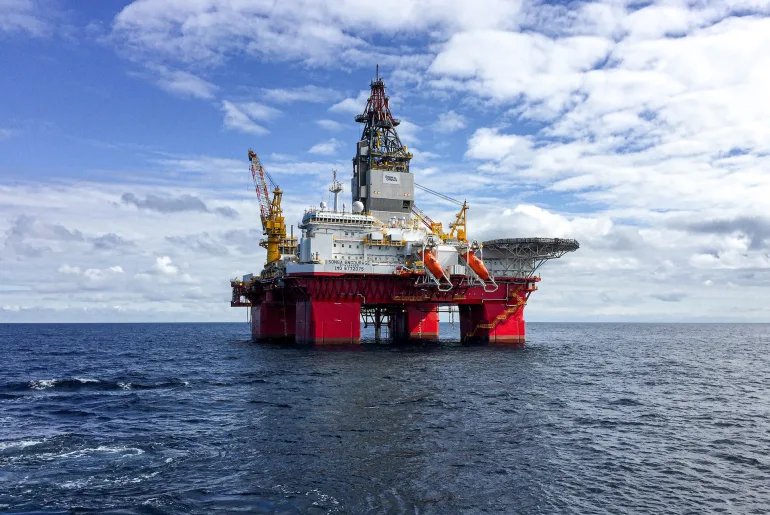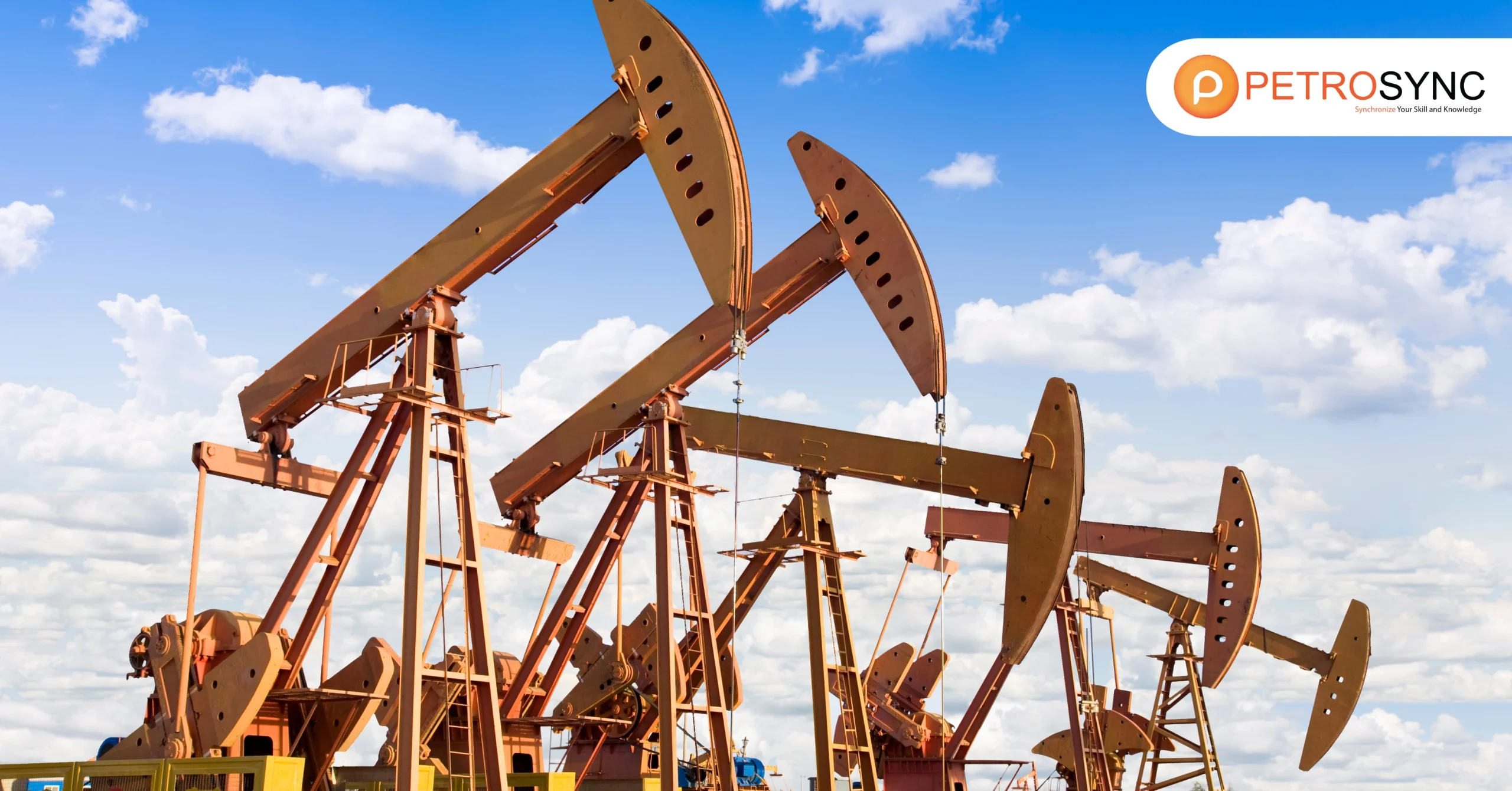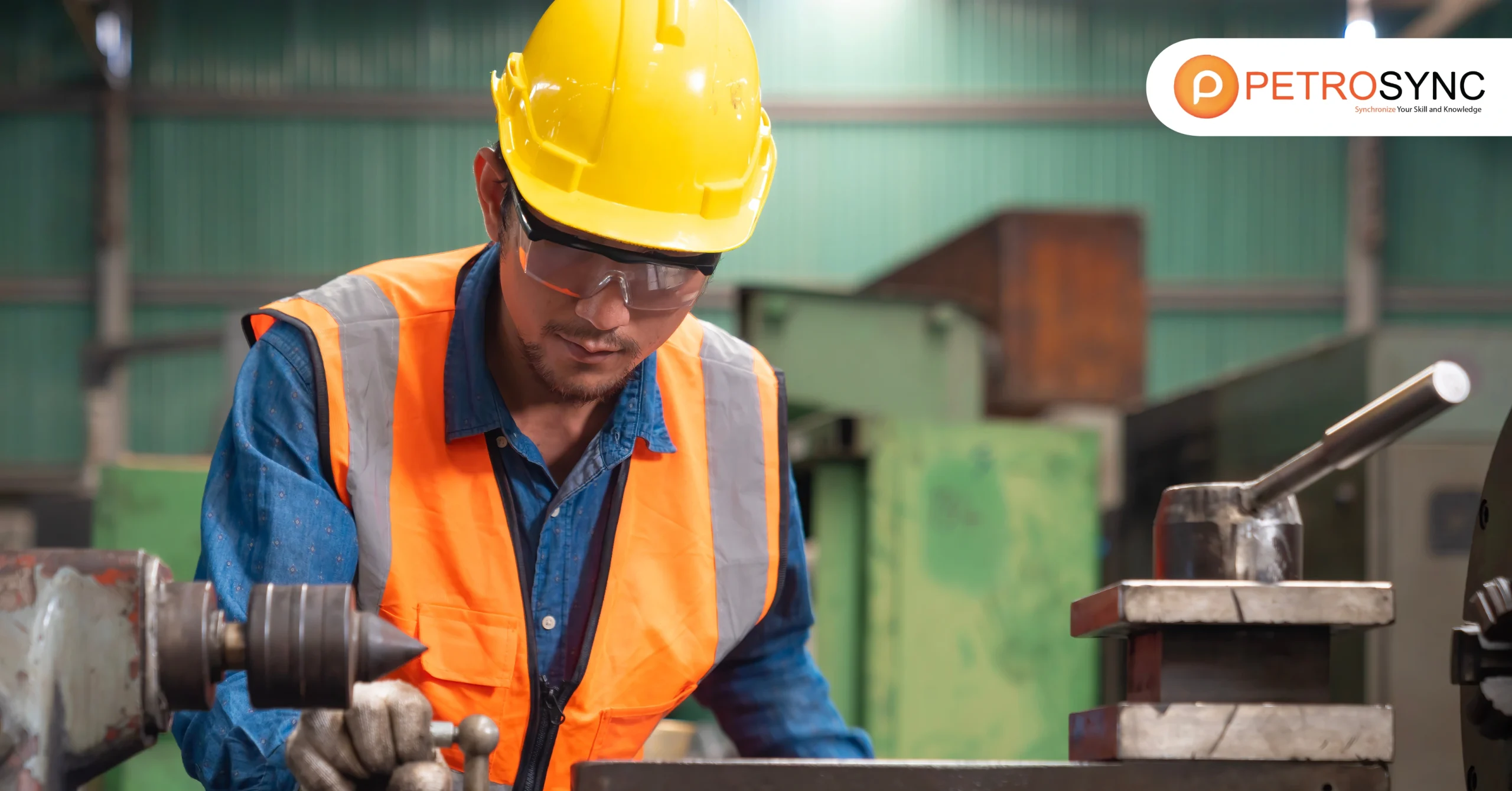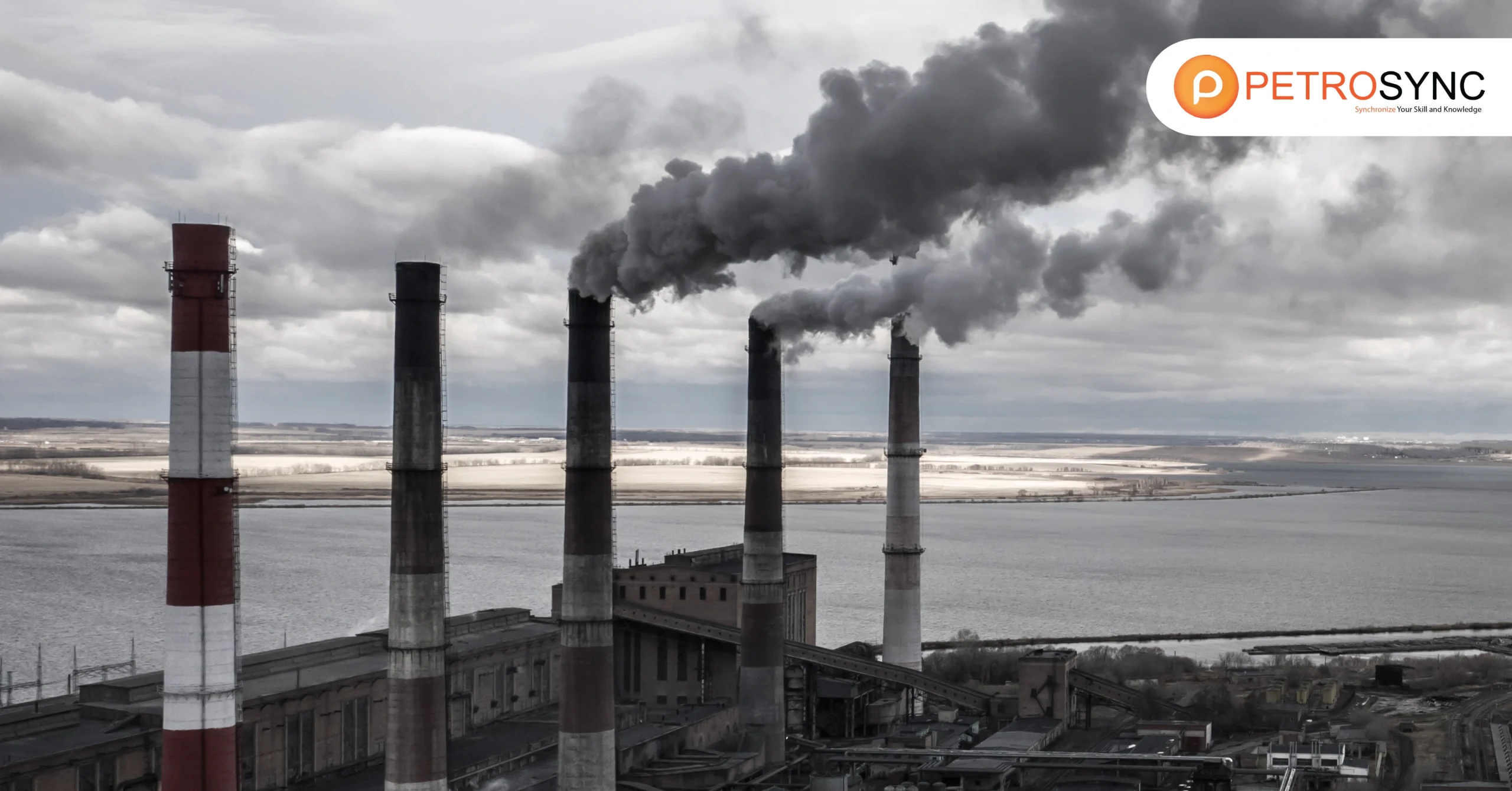Reservoir pressure is a critical aspect of reservoir engineering, significantly impacting oil and gas reservoir behavior and productivity. Understanding its various types and influence on fluid dynamics is essential for optimizing hydrocarbon recovery and maximizing well performance. This article delves into the complexity of reservoir pressure, for successful oil and gas production.
What Is Reservoir Pressure?
Reservoir pressure serves as a fundamental control of gas capacity and reservoir behavior, consisting of two primary factors: lithostatic pressure and hydrostatic pressure. The lithostatic pressure is a result of the overburden stress, while the hydrostatic pressure is the component of reservoir pressure due to pore fluid.
The pressure plays a significant role in how the reservoir behaves and how much gas it can hold. Imagine a vast, hidden storage area deep beneath the Earth’s surface, containing valuable resources like oil and gas.
How Do You Calculate Reservoir Pressure?
The standard formula utilized to determine formation pressure at a specific depth is represented by the subsequent expression:

|
Parameter |
Explanation |
|
TVD |
true vertical depth |
|
SG |
specific gravity of water |
** Note: The specific gravity of water is equivalent to 1.0***
Based on the data above, it is recommended to do the following calculation:
When making predictions about reservoir pressure, utilize pressure gradients ranging from 0.433 to 0.470 psi/ft.
Temperature estimation is straightforward as we assume a linear variation with depth. The temperature at a specific depth is determined using the following expression:
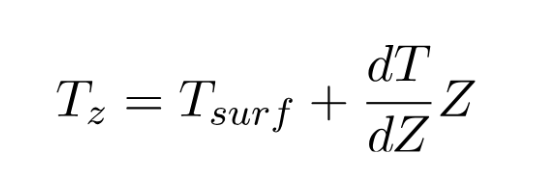
|
Parameter |
Explanation |
|
Tz |
the temperature at the depth Z |
|
Tsurf |
the temperature at the surface |
|
dT/dZ |
the temperature gradient |
|
Z |
the depth |
The typical thermal gradient of crustal rocks is 1.41 °F per 100 ft. In cases where the surface temperature is unknown, a value of 68 °F can be assumed.
For offshore locations, the temperature at the ocean bottom is typically 32 °F. When lacking specific temperature information, it is advisable to use the following values as a general reference:
Utilize a thermal gradient of 1.41 °F per 100 feet. For onshore wells, consider the surface temperature as T_{surf} = 68 °F. In the case of offshore wells, commence at the ocean bottom and take T_{surf} = 32 °F.
What Is The Difference Between Bottom Hole Pressure and Reservoir Pressure?
The measurement commonly referred to as “bottomhole pressure” is a measurement of the fluid pressure in a porous reservoir. The reservoir pore-fluid pressure is a fraction of the overburden pressure that is supported by the fluid system.
On the other hand, reservoir pressure represents the total pressure within the reservoir, including the pressure from the overlying rock layers and the fluid in the pores. The key difference between the two is that bottom-hole pressure specifically focuses on the pressure of the fluid in the reservoir, while reservoir pressure considers the entire pressure exerted on the reservoir, including both the overburden pressure and the fluid pressure.
How to Measure Reservoir Pressure?
Various methods are available to obtain bottom-hole reservoir pressure and temperature, and logging techniques are often employed by reservoir engineers. However, some emerging techniques and special considerations are worth exploring.
What Is The Pressure Distribution In The Reservoir During Fluid Flow?
In the reservoir during fluid flow, the way pressure is distributed throughout plays a crucial role as it directly influences the movement and behavior of the fluids within. This aspect holds significant importance in optimizing reservoir performance.
1. Steady-state Flow
Steady-state flow is described by constant pressure and flow rate occurring simultaneously. Using the equation for steady-state radial flow (Eq. 1), the pressure distribution away from a producing well can be determined. A typical outcome is illustrated in Figure 2.
2. Pseudo Steady-state Flow
Pseudo Steady-state flow behavior occurs when a well stabilizes production from a limited drainage volume. During constant-rate production under these conditions, the difference between the flowing wellbore pressure and the average reservoir pressure remains constant, resulting in a linear pressure drawdown over time.
If the buildup duration is long enough, the late-time buildup pressure will eventually level off to the average reservoir pressure. As production continues in this Pseudo Steady-state manner, pressure depletion in the reservoir takes place.
3. Transient Flow
Transient flow is commonly represented by the radial diffusivity equation, enabling the modeling of pressure changes over time and distance from an observation point, typically a well.
Over a sufficiently extended period, pressure disturbances within the reservoir are proportionally related to the logarithm of the inverse square of the distance from the source of the disturbance, often the wellbore. The disturbance’s magnitude is highest near the origin and diminishes rapidly further away.
The reservoir fluid transmissibility, kh/μ, impacts the pressure wave, with higher transmissibility leading to smaller pressure differentials, and vice versa. This effect emphasizes the need for high-resolution pressure gauges in reservoirs with high transmissibility to accurately measure meaningful pressure differences.
The radius of influence of a pressure disturbance is directly proportional to the square root of time. Consequently, observing distant boundaries during well testing becomes prohibitively expensive, particularly in low-productivity reservoirs.
The changes in pressure over time, solvable through the radial diffusivity equation, have significant applications in well testing procedures.
4. Optical Fiber Measurement of Pressure and Temperature
One promising method to measure reservoir pressure involves optical fiber measurement, where pressure and temperature readings are distributed along a permanently deployed optical fiber within the completion. Fiber optic technology offers advantages, such as reliability due to the absence of electronic components at depth, immunity to shocks, and resistance to electromagnetic interference. It is also operable at high temperatures.
The technology relies on exposing the fiber to periodic ultraviolet (UV) light patterns, inducing a “grating” on it. Pressure and temperature variations alter the reflection wavelength of the gratings, which can be analyzed concerning the fixed, incipient operating wavelength, making the system self-referencing.
The distributed fiber measurements enable the monitoring of a permanent temperature gradient and allow specific measurement points to be selected. Single-point and distributed temperature sensors have shown successful operation in steamflood wells up to 575°F, capturing valuable insights like steamchests, water breakthrough, crossflow, and flow behind pipe.
What Are The Types of Reservoir Pressure?
1. Subsurface Pressures
Subsurface pressures pertain to the pressure conditions found beneath the Earth’s surface, specifically within geological formations like sedimentary rock layers or reservoirs. These pressures significantly influence underground processes, including fluid flow in oil and gas reservoirs.
2. Overburden Pressures
Overburden pressures represent the weight of the overlying rock layers above a particular depth in the subsurface. As more rock layers accumulate over time, the pressure increases, compressing the underlying rocks and impacting fluid behavior within the reservoir.
3. Pore Pressure
Pore pressure refers to the pressure exerted by fluids (such as water, oil, or gas) contained within the tiny spaces or pores between the grains of rock in a reservoir. It is a vital parameter in reservoir engineering, influencing formation stability and hydrocarbon production.
4. Normal Pressure
Normal pressure indicates the typical or expected pressure for a specific depth in the subsurface. It is calculated based on the weight of overlying rocks and the hydrostatic pressure of fluids in the pores.
5. Abnormal Pressure
Abnormal pressure, also known as overpressure, occurs when subsurface pressures are higher than the expected pressures for a particular depth. It may result from various geological processes, like rapid sedimentation, tectonic activity, or hydrocarbon generation.
6. Subnormal Pressure
Subnormal pressure, or under pressure, is the opposite of abnormal pressure. It signifies pressure conditions in the subsurface that are lower than the anticipated pressures for a given depth. Subnormal pressure can arise due to factors such as fluid withdrawal from the reservoir or natural fluid leakage.
Understanding these different reservoir pressures is essential in the exploration and production of hydrocarbons, as they influence fluid behavior and affect the overall economics and safety of oil and gas operations. Effective management of these pressures is crucial for successful reservoir engineering and hydrocarbon recovery.
In conclusion, reservoir pressure stands as a pivotal force in reservoir engineering, impacting oil and gas productivity. Understanding reservoir pressure’s diverse facets, from lithostatic to hydrostatic pressure, empowers professionals to navigate reservoirs effectively.
Differentiating bottom hole and reservoir pressure clarifies their roles in fluid dynamics. Fluid flow, whether steady-state or transient, profoundly affects pressure distribution within reservoirs. Such insights are crucial in oil and gas exploration.
Reservoir pressure takes a prominent place among the subjects discussed within PetroSync’s Well-Completion and Workover training. This comprehensive program delves into the intricacies of reservoir pressure management, ensuring you gain a solid grasp of its significance in optimizing well performance and overall operations within the oil and gas industry.
PetroSync’s commitment to excellence is evident in its well-completion and workover training, which thoroughly covers all essential subjects crucial for facilitating a seamless well-completion and workover process.
The training program is thoroughly designed to encompass a wide range of vital topics, equipping you with the knowledge and skills needed to navigate challenges and contribute effectively to the success of well-completion and workover activities. Improve your knowledge and skill by learning the practicality of Well Completion and Workover with PetroSync!
Credit header image: Pexels

SEO specialist by day, fact-checker by night. An avid reader and content writer dedicated to delivering accurate and engaging articles through research and credible sources.

